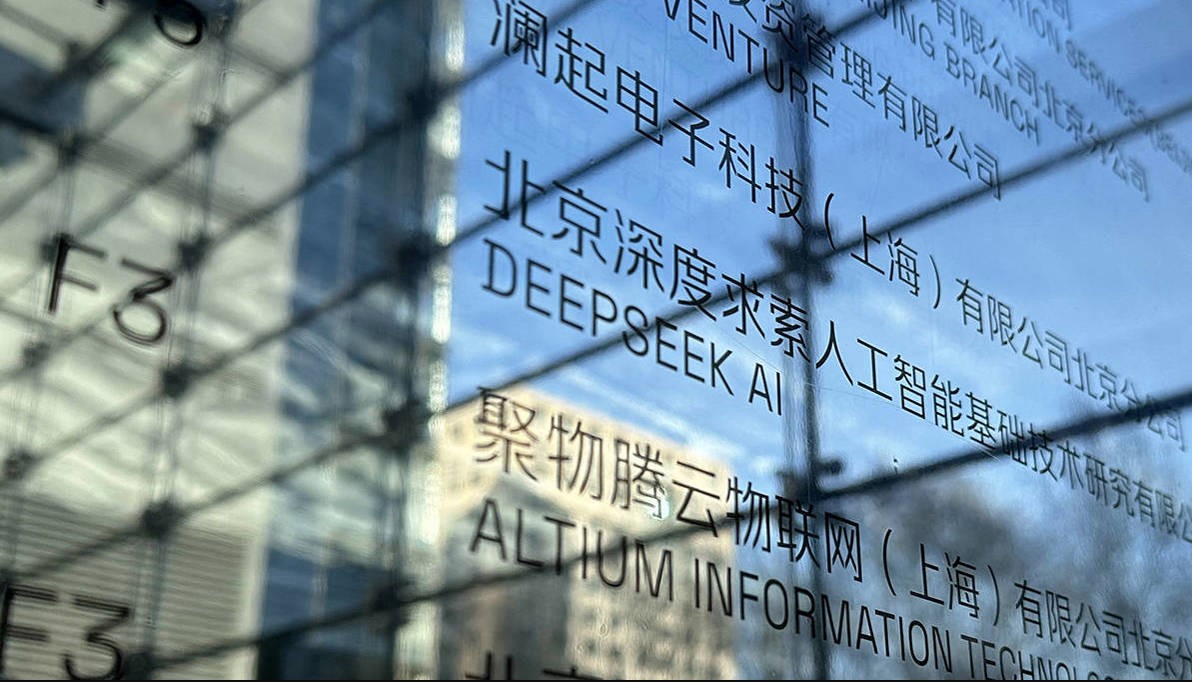
By Angela Huyue Zhang*
In 1957, the Soviet Union launched the world’s first artificial satellite into orbit, sparking fears in the United States that, unless it took radical action to accelerate innovation, its Cold War adversary would leave it in the technological dust. Now, the Chinese startup DeepSeek has built an artificial intelligence model that it claims can outperform industry-leading American competitors, at a fraction of the cost, leading some commentators to proclaim that another “Sputnik moment” has arrived.
But the focus on the US-China geopolitical rivalry misses the point. Rather than viewing DeepSeek as a stand-in for China, and established industry leaders (such as OpenAI, Meta, and Anthropic) as representatives of the US, we should see this as a case of an ingenious startup emerging to challenge oligopolistic incumbents – a dynamic that is typically welcomed in open markets.
DeepSeek has proved that software ingenuity can compensate, at least partly, for hardware deficiencies. Its achievement raises an uncomfortable question: why haven’t leading US industry leaders achieved similar breakthroughs? Nobel laureate economist Daron Acemoglu points the finger at groupthink, which he says prevented Silicon Valley incumbents from adequately considering alternative approaches. He might have a point, but it is only half the story.
DeepSeek’s success didn’t happen overnight. In May 2024, the firm launched its V2 model, which boasted an exceptional cost-to-performance ratio and sparked a fierce price war among Chinese AI providers. Moreover, over the last year or so, Chinese firms – both giants (including Alibaba, Tencent, and ByteDance) and startups (like Moonshot AI, Zhipu AI, Baichuan AI, MiniMax, and 01.AI) – have all developed cutting-edge AI models with remarkable cost efficiency.
Even within the US, researchers have long explored ways to improve the efficiency – and thus lower the costs – of AI training. For example, in 2022, former Meta researcher Tim Dettmers, now at the Allen Institute for Artificial Intelligence, and his co-authors published research on optimising AI models to run on less computing power. DeepSeek cited their research in the technical paper it released along with its V3 model.
Put simply, it would have been impossible for any AI firm – especially an industry leader – not to realise that lower-cost models were feasible. But American AI developers showed much less interest than their Chinese counterparts in pursuing this line of innovation. This was not a matter only of insularity or hubris; it appears to be a deliberate business choice.
AI development has so far been defined by the “scaling law,” which predicts that more computing power leads to more powerful models. This has fueled demand for high-performance semiconductor chips, with more than 80% of the funds raised by many AI companies going toward computing resources.
That is why the biggest winner has been the advanced chipmaker Nvidia, which claimed 90% of the market for AI graphics processing units by the end of last year. Thanks to this virtual monopoly in the hardware layer, Nvidia could control the foundations of generative AI. The cloud-computing sector, which provides the on-demand computing power AI models require, is similarly concentrated, with Amazon, Google, and Microsoft dominating the market.
But these upstream players aren’t just passive suppliers. They have strategically positioned themselves across the AI value chain by acquiring, investing in, or forming alliances with leading AI model developers. Nvidia has invested in OpenAI, Mistral, Perplexity, and others. Google not only develops its own AI models, but also holds a stake in Anthropic, OpenAI’s main competitor. And Microsoft, an early OpenAI investor, recently backed Inflection AI in the US and expanded overseas, with investments in France’s Mistral and the United Arab Emirates’ G42.
Taking this approach has ensured that the entire AI industry depends on a few giant firms and entrenched a dynamic whereby rising demand for computing power across the sector increases these firms’ profits. As dominant players, they had less incentive to improve cost efficiency downstream, which could cut into their upstream profits.
Chinese AI firms have been operating within an entirely different reality, as US-led trade restrictions have prevented them from purchasing the most advanced chips. The goal of US export controls has always been to cripple China’s AI sector. But, as DeepSeek has shown, they have had the opposite effect, spurring precisely the innovations that will enable Chinese firms to challenge American AI oligopolies. Already, DeepSeek’s rise triggered a stock-market selloff of AI-related US companies, not least Nvidia.
This is surely unwelcome news for US President Donald Trump’s administration. Trump has made no secret of his determination to contain China, including by fulfilling his promise to impose a 10% across-the-board import tariff on Chinese goods. And he has heavily courted Silicon Valley bosses – once aligned with the Democratic Party – who have eagerly embraced the prospect of lax regulation.
But that does not mean that DeepSeek’s rise is bad news for the US or the AI industry more broadly. Over the past five years, calls to rein in America’s tech giants have been growing louder. Despite the best efforts of former President Joe Biden’s administration, however, the US Congress has failed to introduce any meaningful legislation on this front. Ironically, thanks to US policies designed to constrain China’s AI ambitions, the US AI sector seems set to get some of the market competition that it so badly needs.
Geopolitics might have contributed to DeepSeek’s rise. But the firm’s disruption of the AI industry is about market – not great-power – competition.
*Angela Huyue Zhang, Professor of Law at the University of Southern California, is the author of High Wire: How China Regulates Big Tech and Governs Its Economy (Oxford University Press, 2024) and Chinese Antitrust Exceptionalism: How the Rise of China Challenges Global Regulation (Oxford University Press, 2021). Copyright 2025 Project Syndicate. It is here with permission.
14 Comments
As long as it’s all open source dont really see an issue.
Deepseek must have built their model using existing data from OpenAI, Anthropic etc. How they deliver their product and the quality of performance is still a big unknown. If it's cheaper, users will likely get what they pay for.
EDIT: Had a play around with it. Easy to make it fail. Complete lack of concision and the server regularly fails. Just saying.
It is different probably because of its human training. When asked "Please list some male chauvinist songs" Claude.AI refused to answer and took two paragraphs to talk down to me. Rewording the question to be about "how gender dynamics have been portrayed in music" and many more paragraphs of moral instruction and a single recommendation: Lesley Gore's "You Don't Own Me".
So using DeepSeek.AI the same question supplies seven useful examples after a short paragraph defining 'Male Chauvanist' and saying " These songs often come from a different cultural context and may not align with modern values of gender equality." So now I might listen to "Young Girl" by Gary Puckett & The Union Gap (1968) or "Run for Your Life" by The Beatles (1965).
I'll keep using DeepSeek while it remains free.
the key difference is that DS builds its algorithm and models based on Chinese.
Chinese, compared with English, contains far more information per byte.
therefore DS can achieve same or better results with far less computing power and costs.
Be careful LLM are becoming less to do with language and more to do with concepts...
I have DeepSeek R1 running locally (only small model though will have bigger soon) I think it upsets the revenue model of openAI not their knowledge and IP....
Its early days, but who has the best and cheapest distracts from what is being achieved, the full size R1 is nuts good at coding.
if you are not aware of the pace of the advance ...
its about to get crazy I suggest never ever trust what you see from here on in
https://www.youtube.com/shorts/onKlO_Zqw6A?feature=share
there is some cool stuff online about how to build persistence of AI built people in veo2...
we are already almost here... https://youtu.be/YgJ5ZEn67tk
Buckle your seatbelt Dorothy, 'cause Kansas is going bye-bye!"
I actually like the idea of embedding proof on the blockchain when you release a video so people know its from the actual wallet/person they say its from... still could be AI but at least proof from source...
We run everything on tech now, the slightest hiccup and our most important supply chains fail in days. There isnt a manual back up anymore.
As with what possibly/potentially happened with COVID - either released form a lab, or a result of something else in china.. the actual disaster is more likely to be accidental due to the the lack of controls and urgency to stay competitive, than a deliberate act.
My expectation is that our entire society relies on tech now - Bitcoin, food deliveries, oil, healthcare, military, police, banking. People mis understand the pace of AI development and its potential to rapidly disrupt these processes if used maliciously.
The pace and lack of controls around AI development - combined with the many other global issues - likely means that future balanced investment for people may no longer be their mid to long term economic and healthcare security.. but having back up plans in the event of large scale disruption to key national and inetrnational processes.. of fraud.
Stock the bunker with popcorn and download a few thousand hours of netflix offline! lol
perplexity.com is one I am trying at present. A number of free searches, then $20 month.
It's a race to the bottom.
DS this year. Something broader and faster next year.
Unlike OS and ERP which lock large enterprises in to their licensing models, you can still pick and choose your AI.
Just going a bit off topic here, has anyone seen the documentary Wild Wild Space? And the amount of satellites they are putting up there and it is mostly un-regulated. I found the bit where they said if they start colliding, that it could cause a chain reaction and knock most of the satellites out in a matter of days, then it will cause a ring of debris around earth making it nearly impossible to ever get a rocket or a satellite into space again.

We welcome your comments below. If you are not already registered, please register to comment.
Remember we welcome robust, respectful and insightful debate. We don't welcome abusive or defamatory comments and will de-register those repeatedly making such comments. Our current comment policy is here.